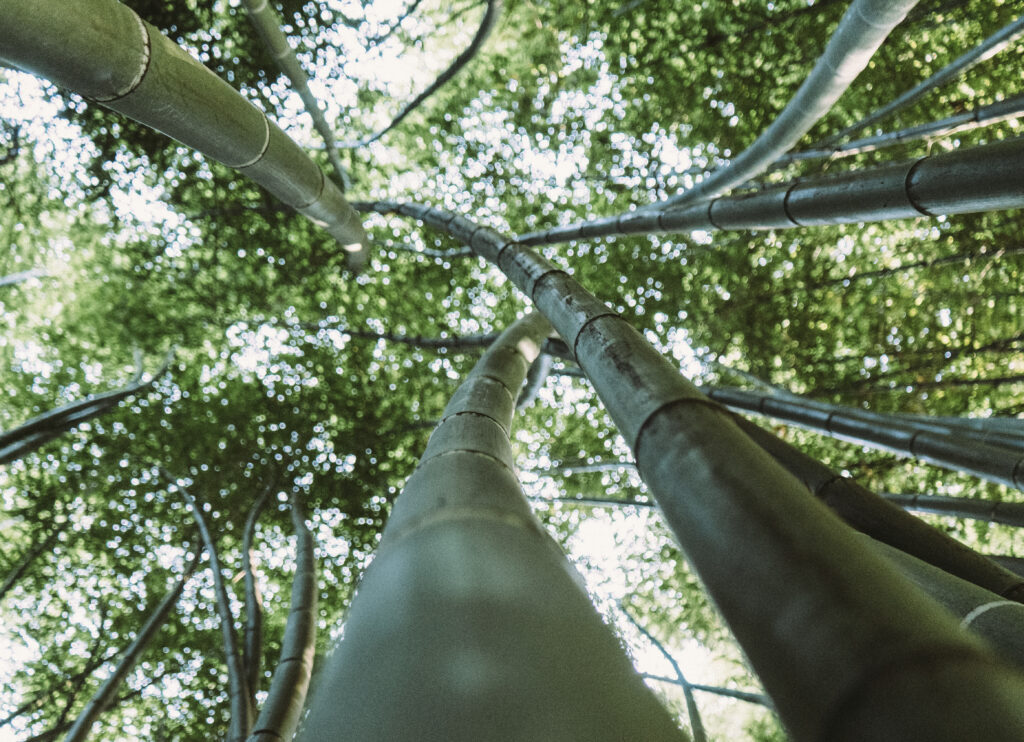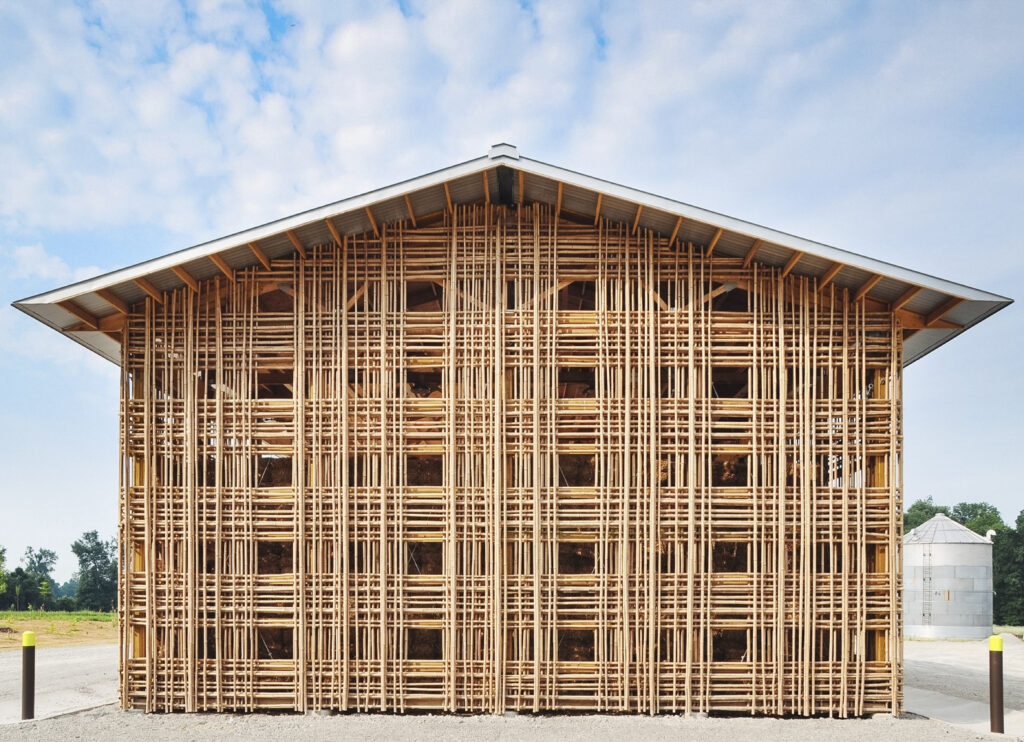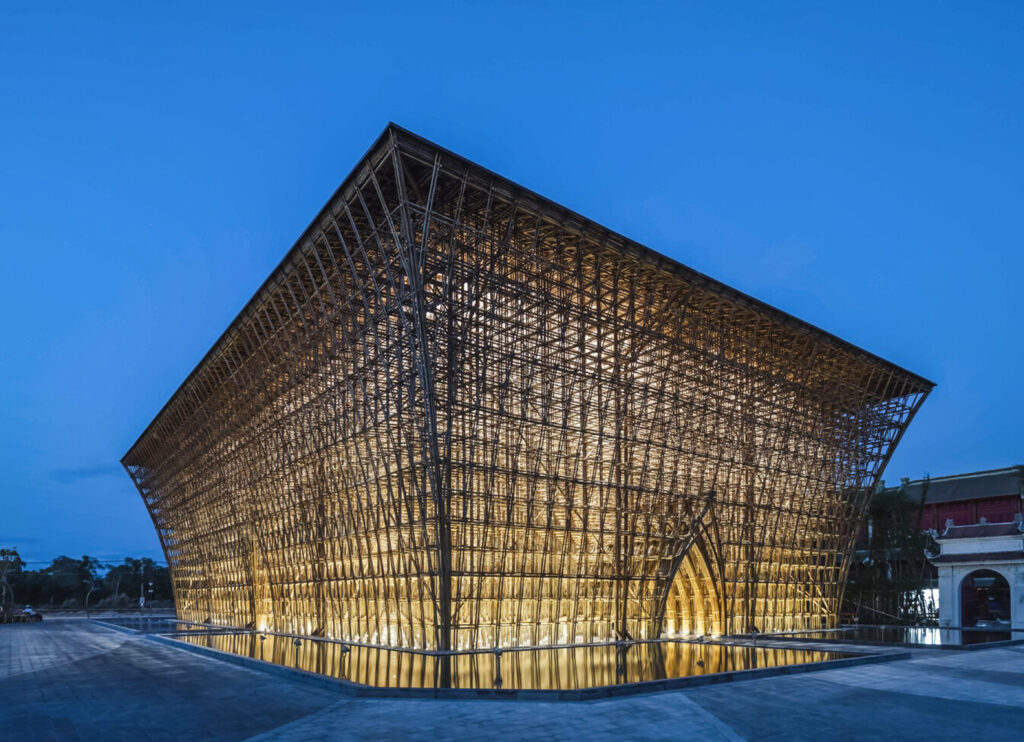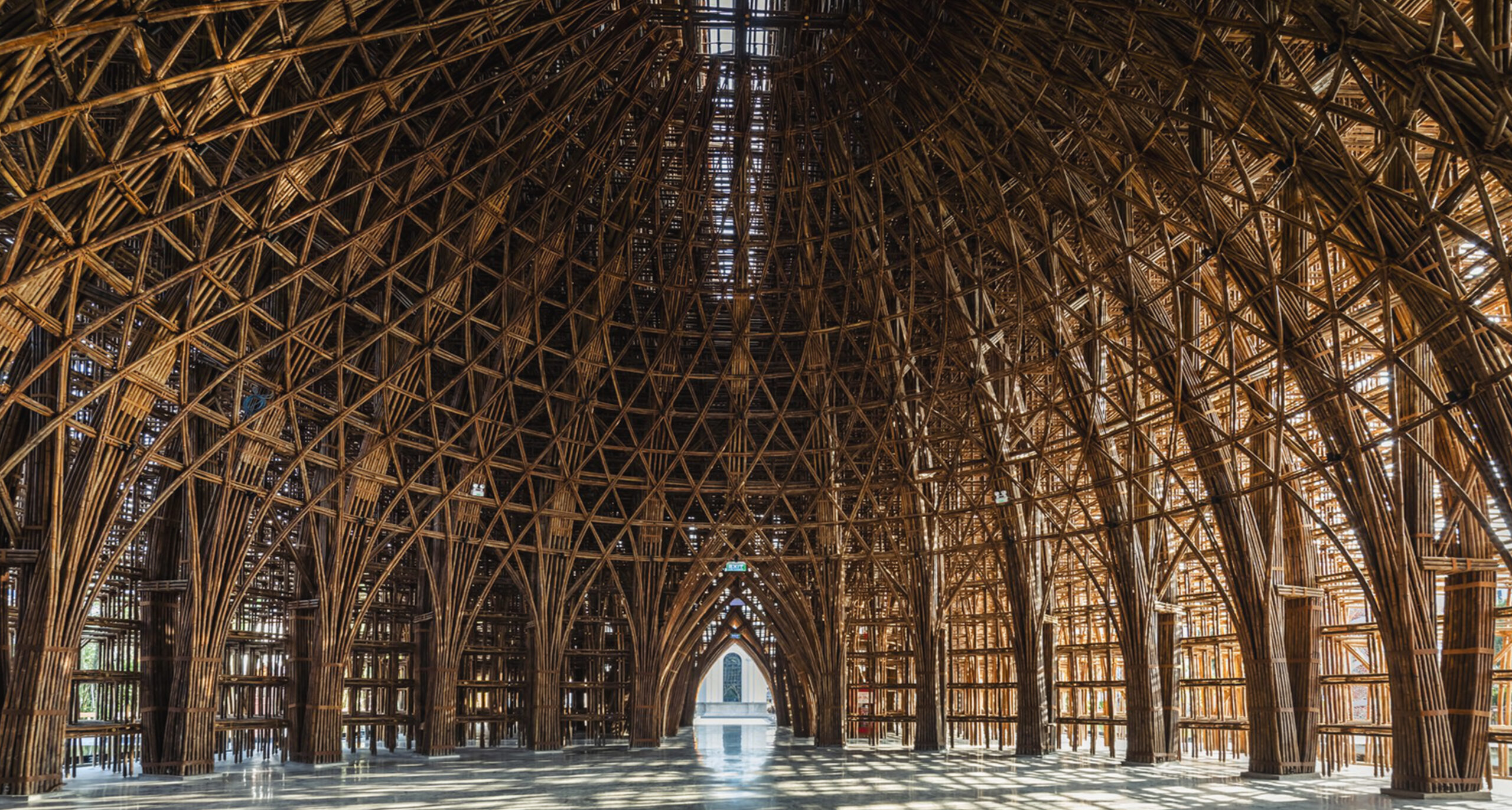Bamboo is a wonderful plant that we associate with gardens and exotic parks. But what would you think if I told you that it is also an excellent building material? First of all, Bamboo shows remarkable structural capabilities. It has a compressive strength equal to that of cement and it is comparable to the strength of steel in terms of traction.
For this reason, the bamboo is also remarkable for its durability and versatility. It is a tall, woody grass and it’s typically fast growing. If responsibly collected it is an excellent regenerative material. There are 1.600 bamboo species known, growing all over the world, but only a few possess the qualities of form, flexibility and aesthetic necessary for the construction of buildings.

The diffusion of bamboo
Bamboo is found naturally on almost every continent, especially in warmer climates. One of its main features is its fast growth. Bamboo can grow back in just 3-5 years. It doesn’t require the decades needed for wood. This also translates into immense carbon capture potential making it a viable alternative for mitigating climate change.
It is particularly prevalent in East and Southeast Asia, where it is often used as a building material in residential and public buildings. It is used both as a structural element and as an infill component.
Bamboo architecture
Bamboo architecture commonly employs several structural systems. It often refers to traditional schemes, but also allows you to experiment with innovative and unusual techniques in structural design as well as in research on the use of materials. It also offers great flexibility in composition, as well as in construction techniques and in the assembly/disassembly of architectural elements.
One of the architects who used bamboo is the Japanese Shigeru Ban. A profound connoisseur of tradition and, at the same time, an innovator in the use of this construction component, he says: “I’m not inventing anything new, I’m just using the existing material in a different way”.
I’m not inventing anything new, I’m just using existing material in a different way
And perhaps this is the right interpretation. Bamboo is a material that lends itself to new uses in the continuity of the local tradition. Let’s look at some examples.

Bamboo Sports Hall
Chiangmai Life Architects have designed a sports hall made entirely of bamboo for the Panyaden International School of Chiang Mai, in Thailand. The geometric shape is based on that of a lotus flower. The structure is exposed, and it is an excellent example of constructive wisdom. The structural design uses prefabricated bamboo trusses, without the need for steel reinforcements, thus demonstrating the robustness and versatility of bamboo as a building material.
The Mason Lane Farm Operations Facility
The Mason Lane Farm Operations Facility, located in Goshen, Indiana (USA), is a new complex for the maintenance and shelter of agricultural machinery. It also has a space for seasonal storage of grain and hay. The structure is annexed to an extension of about 800 hectares of agricultural land. And it is used for agriculture and for the protection of local fauna. The shed is entirely covered with bamboo canes. The canes are tied together with galvanized metal clamps to form a three-dimensional structure that gives elegance to the barn. And its air permeability is useful for drying hay.
Grand World Phu Quoc Welcome Center
Grand World Phu Quoc is a sprawling entertainment and shopping complex on Phu Quoc, the Vietnam’s largest island. Its reception center is a new bamboo structure that embodies Vietnamese culture. Designed by VTN Architects (Vo Trong Nghia Architects), the 1,460-square-meter reception center was built using approximately 42,000 bamboo elements without any chemical treatment. The design of this pure bamboo structure combines arches, domes and grid structures. Ropes and pins, also made of bamboo, were used to connect the elements together.

PANNAR
PANNAR is a cultural building located in Nakhon Ratchasima, Thailand. Designed by Vin Varavarn Architects, the project includes a two-storey cultural activities center with an ondulating roof made of locally grown bamboo. The roof design helps collect and drain rainwater into small channels surrounding the building. Which in turn redirect the water to feed the other neighboring areas.
Bamboo Treehouse Village
Atelier Nomadic, specialized in the design of biophilic architecture, has created a series of bamboo tree houses as part of an eco-friendly resort in Mexico. The volumes are inspired by polyhedral shapes. They have been developed using bioclimatic design principles and built with different local bamboo species.
To learn more: Bamboo as a building material sustainable, flexible and resistant
May you be interested in : MATERIALLY: un osservatorio sui materiali nel settore del design





